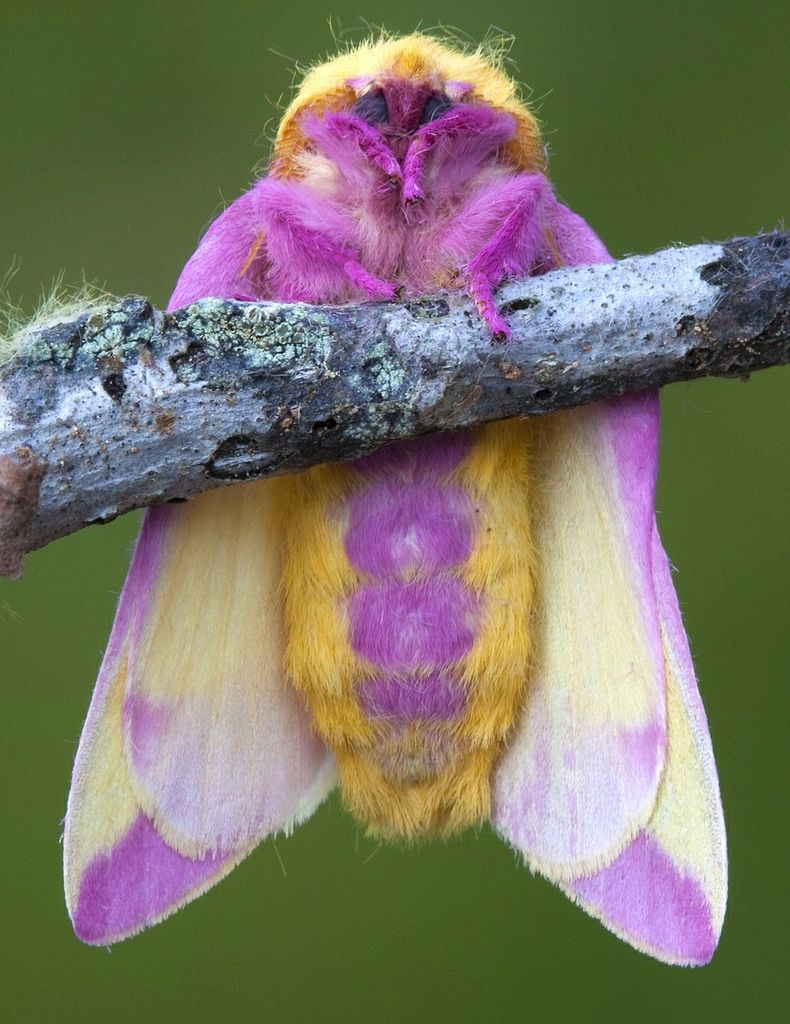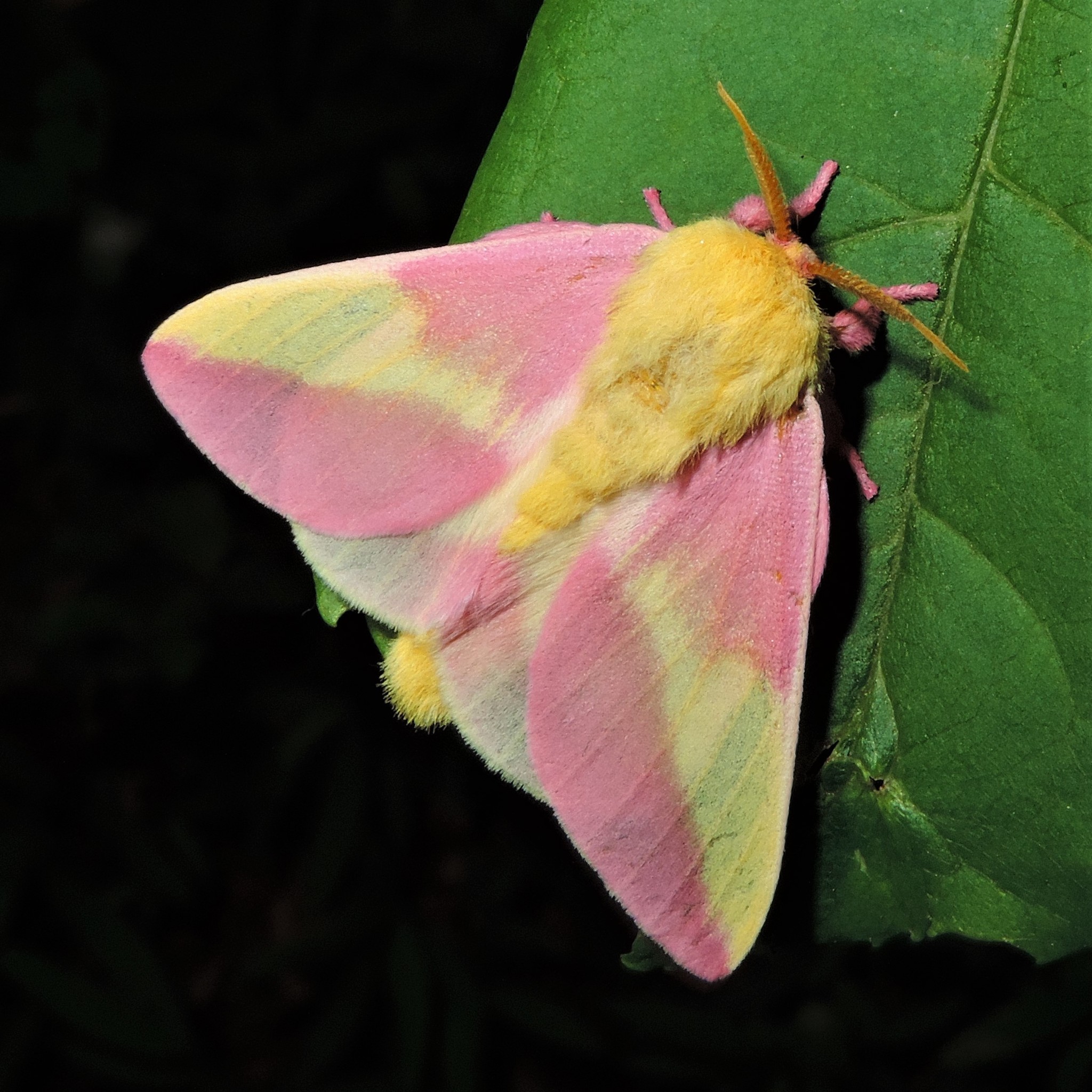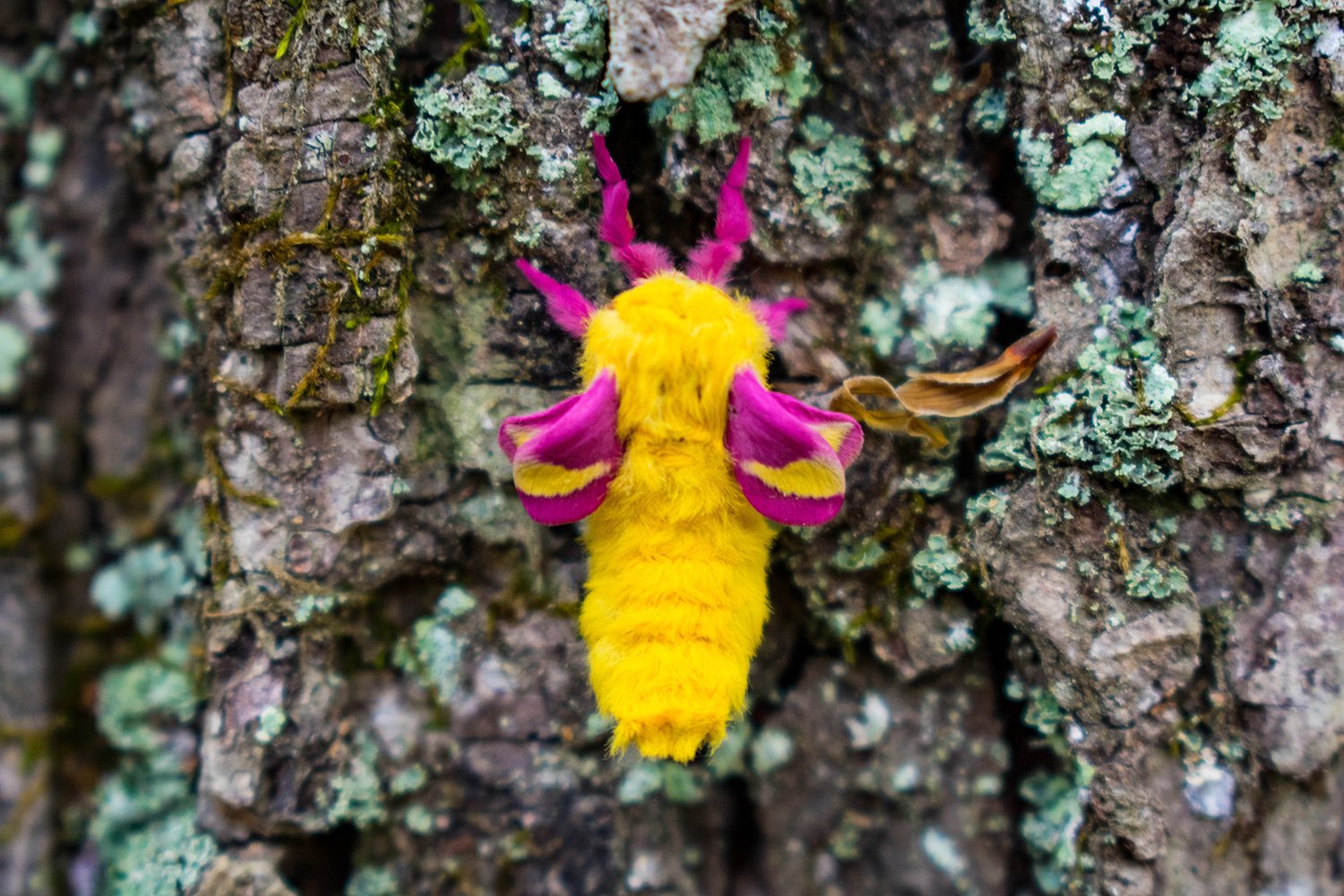The Rosy Maple Moth: Nature's Pink And Yellow Jewel
The Rosy Maple Moth, scientifically known as Dryocampa rubicunda, is a truly captivating insect that graces the temperate forests of North America. With its striking pink and yellow coloration and a charmingly woolly body, this small moth in the family Saturniidae immediately catches the eye, standing out as a vibrant jewel amidst the green foliage. It's a creature that embodies both delicate beauty and fascinating biological intricacies, making it a favorite among nature enthusiasts and a subject of continuous scientific interest.
Often admired for their unique beauty, these moths are much more than just a pretty face. They play a subtle yet significant role in their ecosystems, primarily through their larval stage, which feeds on maple and oak leaves. Understanding the rosy maple moth's life cycle, behavior, and habitat is not only fascinating but also crucial for appreciating the biodiversity of our natural world and ensuring the continued health of the environments they call home.
Table of Contents
- Unveiling the Rosy Maple Moth: A Brief Overview
- A Canvas of Color: Physical Description of the Rosy Maple Moth
- Geographic Range and Preferred Habitats
- The Intricate Life Cycle of the Rosy Maple Moth
- Diet and Host Trees: A Symbiotic Relationship
- Behavior and Ecological Role
- Historical Discovery and Scientific Classification
- Conservation and Coexistence with the Rosy Maple Moth
Unveiling the Rosy Maple Moth: A Brief Overview
The rosy maple moth (Dryocampa rubicunda) holds a special place within the family Saturniidae, which is renowned for its large, often spectacular members, including the giant silkworm and royal moths. Despite being classified as a "great silk moth," the rosy maple moth is, in fact, the smallest of these impressive creatures. This characteristic makes its vibrant coloration even more striking, as such intense hues are typically associated with larger species. Its compact size, combined with its distinctive appearance, makes it easily identifiable among other moth species found in North America.
This species is well-known for its woolly body and the unique, yet variable, combinations of pink and yellow that adorn its wings. These colors serve not only as a visual spectacle but also as a form of aposematism, a warning coloration that signals to potential predators that the moth might be unpalatable or toxic, even though it generally isn't. Its primary role in the ecosystem revolves around its larval stage, which is a voracious feeder on the leaves of maple and, to a lesser extent, oak trees. While its caterpillars have occasionally been noted as a nuisance to specific maple tree species, the adult rosy maple moth is not typically considered a pest, existing in harmony with its forest environment.
A Canvas of Color: Physical Description of the Rosy Maple Moth
One of the most captivating aspects of the rosy maple moth is its stunning physical appearance. Both the adult moth and its larval stage, the caterpillar, boast unique and memorable looks that contribute to their charm and ecological significance.
The Adult Moth's Dazzling Display
Adult rosy maple moths are truly a sight to behold. They are characterized by a hairy, woolly body and wings that display beautiful combinations of yellow and pink. The intensity and distribution of these colors can vary significantly, making each individual moth a unique piece of art. Some specimens might exhibit a deeper, more vibrant pink, while others lean towards a paler, almost pastel hue, with yellow accents ranging from bright lemon to a softer cream.
This variable coloration is particularly evident across its geographic range. For instance, a dark pink form is most prevalent in the Ozarks region, suggesting an adaptation to local environmental factors or genetic variations within populations. Conversely, a lighter version of the rosy maple moth is more commonly observed in central and northeastern Missouri. There's even a very pale form, known as D. rubicunda alba—with "alba" meaning "white"—which occurs in western and most of Missouri. These variations highlight the species' adaptability and the fascinating diversity within its populations. Males of the species can be distinguished by their much larger antennae compared to females, which are designed to detect the pheromones released by females for mating.
The "Green Striped Maple Worm": Larval Stage
While the adult moth is celebrated for its vibrant colors, the caterpillar stage, commonly known as the "green striped maple worm," boasts its own unique appearance. These larvae are typically green with longitudinal stripes, often adorned with small, horn-like protrusions on their heads, giving them a distinct and somewhat intimidating look. Despite their somewhat formidable appearance, these caterpillars are generally harmless to humans. Their coloration provides excellent camouflage among the maple and oak leaves they consume, helping them evade predators. Understanding the unique features of both the adult and larval stages is key to appreciating the full life cycle of the rosy maple moth.
Geographic Range and Preferred Habitats
The rosy maple moth is a species truly native to North America, and its presence spans a wide geographical area across the continent. It can be found throughout the eastern United States and southeastern Canada, primarily inhabiting temperate forests where its host trees are abundant. This broad distribution underscores its adaptability to various climatic conditions within this region.
Specific observations of the rosy maple moth highlight its presence in numerous states. For example, in Ohio, adults of this species can typically be found from May to August, aligning with the peak growing season for its host trees. Its variable coloration, as mentioned earlier, also serves as an indicator of its widespread presence, with distinct forms appearing in regions like the Ozarks and various parts of Missouri, including central, northeastern, and western areas. The moth's preference for temperate forests is directly linked to the availability of its primary food source: maple and oak trees. These forests provide the necessary environment for both the larval feeding stage and the adult moth's reproductive activities, making them ideal habitats for the rosy maple moth to thrive.
The Intricate Life Cycle of the Rosy Maple Moth
Understanding the life cycle of the rosy maple moth is both fascinating and incredibly important for appreciating this beautiful species and for any conservation efforts. Like all moths, it undergoes complete metamorphosis, transitioning through four distinct stages: egg, larva (caterpillar), pupa, and adult.
- Eggs: The life cycle begins when the female rosy maple moth lays her eggs, typically on the underside of host tree leaves. These eggs are small and usually laid in clusters.
- Larva (Caterpillar): Upon hatching, the eggs give rise to the "green striped maple worm" caterpillars. This is the primary feeding stage of the moth's life. The caterpillars spend their time voraciously consuming maple and oak leaves, growing rapidly through several instars (molting stages). As they grow, they shed their skin, each time emerging larger and sometimes with slight changes in coloration or markings. It is during this stage that they accumulate the energy reserves needed for the subsequent transformation.
- Pupa: Once the caterpillar reaches its full size, it descends from the host tree to pupate. The pupa stage is a period of remarkable transformation, often occurring underground or in leaf litter. This is a dormant stage, during which the caterpillar undergoes a complete reorganization of its body, developing into the adult moth. The duration of the pupal stage can vary depending on environmental conditions, but it typically lasts through the colder months, allowing the adult to emerge when conditions are favorable.
- Adult: The final stage is the emergence of the adult rosy maple moth. These adults are primarily focused on reproduction. Unlike the caterpillars, adult moths do not feed extensively; their mouthparts are often reduced or non-functional, relying on the energy reserves built up during the larval stage. Their brief adult life is dedicated to finding a mate and laying eggs, thus continuing the cycle. In regions like Ohio, adult rosy maple moths are typically observed flying from May to August, indicating their seasonal appearance and reproductive period.
The successful completion of each stage is vital for the survival of the species. The timing of their seasonal appearance is synchronized with the availability of fresh leaves for their larvae, ensuring their survival and perpetuation.
Diet and Host Trees: A Symbiotic Relationship
The diet of the rosy maple moth is intrinsically linked to its survival and its common name. While adult moths have vestigial mouthparts and generally do not feed, or feed very little, the larval stage—the "green striped maple worm"—is a specialist feeder. These caterpillars primarily feed on the leaves of various maple species, which is why they are so often associated with these trees. Their preferred host trees include red, sugar, silver, and box elder maples. They also consume oak leaves, though maples are their staple.
This specific dietary preference creates a symbiotic relationship between the moth and its host trees. The caterpillars play a role in the ecosystem by processing plant matter, and in turn, the trees provide the necessary sustenance for the moth's development. While large infestations of caterpillars can lead to defoliation, the rosy maple moth is generally not considered a major pest in healthy forest ecosystems. However, in urban or suburban settings where specific maple tree species are abundant and concentrated, their caterpillars have proven to be a nuisance to various maple tree species, potentially causing aesthetic damage or minor stress to the trees. Understanding these host plant relationships is crucial for both ecological studies and for managing any potential impact on cultivated trees.
Behavior and Ecological Role
Beyond their striking appearance and fascinating life cycle, rosy maple moths exhibit several interesting behaviors and play a role in their ecosystem. One notable behavior of adult moths is their tendency to "play dead" when handled. This is a common defense mechanism among many insect species, designed to deter predators. By feigning death, the moth hopes to appear unappealing or non-threatening, encouraging a predator to lose interest.
The vibrant pink and yellow coloration of the rosy maple moth is also a form of aposematism, or warning coloration. While these moths are not venomous or toxic, their bright colors may serve as a signal to predators that they are unpalatable or mimic other species that are. This visual warning helps them avoid being eaten. Their flight activity, often observed from May to August in regions like Ohio and the northeastern United States, is typically nocturnal, though they are sometimes attracted to lights at night.
Ecologically, the rosy maple moth, particularly in its larval stage, contributes to the natural cycle of nutrient transfer by consuming tree leaves. While their caterpillars can occasionally cause defoliation, especially on specific maple tree species, they are generally not considered a significant pest in natural forest environments. Their impact is usually localized and does not pose a severe threat to the overall health of the forest. As part of the broader insect community, they also serve as a food source for various birds and other insectivores, contributing to the food web. Their presence indicates a healthy temperate forest ecosystem, and their continued existence is a testament to the intricate balance of nature.
Historical Discovery and Scientific Classification
The scientific journey of the rosy maple moth began in the late 18th century when it was formally described and named by a prominent figure in the field of natural history. This distinct species, Dryocampa rubicunda, was first described by Johan Christian Fabricius in 1793. Fabricius was a renowned Danish zoologist and entomologist, a student of the famous Carl Linnaeus, who made significant contributions to the classification of insects. His work laid the groundwork for understanding many species, including this charming moth.
The classification of the rosy maple moth places it firmly within the family Saturniidae. This family is globally recognized for encompassing the giant silkworm moths and royal moths, a group known for their impressive size, often striking coloration, and the silk produced by some of their larval forms. While the rosy maple moth is noted as the smallest among these "great silk moths," its inclusion in Saturniidae highlights its shared evolutionary lineage and biological characteristics with these larger, more famous relatives. Understanding its scientific name and classification provides a universal reference point for researchers and enthusiasts worldwide, allowing for consistent study and communication about this unique insect.
Conservation and Coexistence with the Rosy Maple Moth
The rosy maple moth, with its inherent beauty and ecological role, deserves our attention and appreciation. Understanding its life cycle, habitat requirements, and behaviors is not merely an academic exercise; it's an important step towards ensuring the conservation of this beautiful species and maintaining the health of the ecosystems it inhabits. While not currently listed as endangered, habitat loss and climate change can always pose potential threats to insect populations, making ongoing observation and research crucial.
For homeowners or those concerned about their trees, it's worth noting that while the caterpillars of the rosy maple moth can occasionally be a nuisance to various maple tree species, they rarely cause severe, long-term damage. Healthy trees can typically withstand some defoliation. If prevention or management becomes necessary, non-chemical methods are often preferred to protect the broader ecosystem and other beneficial insects. These might include manual removal of caterpillars for small infestations or encouraging natural predators like birds.
Ultimately, coexisting with the rosy maple moth involves recognizing its place in nature. By preserving temperate forests and promoting biodiversity, we help ensure that future generations can continue to admire these charming pink and yellow jewels. Every creature, no matter how small, plays a part in the intricate web of life, and the rosy maple moth is a vibrant reminder of the beauty and complexity of our natural world.
Conclusion
The rosy maple moth, Dryocampa rubicunda, is a testament to the incredible diversity and beauty found within the insect world. From its eye-catching pink and yellow adult form to its "green striped maple worm" caterpillar, every stage of its life cycle offers a glimpse into the intricate workings of nature. As the smallest of the great silk moths, it defies expectations with its vivid coloration and fascinating behaviors, such as playing dead when handled. Its specialized diet of maple and oak leaves highlights its integral role in North American temperate forests, even if its caterpillars occasionally prove to be a minor nuisance to specific tree species.
The story of the rosy maple moth, from its scientific description by Johan Christian Fabricius in 1793 to its variable appearances across its broad geographic range, underscores the importance of scientific inquiry and ecological understanding. By appreciating the unique attributes of the rosy maple moth, we are reminded of the delicate balance within our ecosystems and the value of every species. We encourage you to take a moment to observe the natural world around you. Perhaps you'll be lucky enough to spot this charming pink and yellow jewel fluttering through the trees. Share your observations in the comments below, or explore more articles on our site to deepen your appreciation for the wonders of nature!

Rosy Maple Moth Facts, Habitat, Diet, Life Cycle, Baby, Pictures

Maryland Biodiversity Project - Rosy Maple Moth (Dryocampa rubicunda)

Rosy maple moth - Australian Geographic